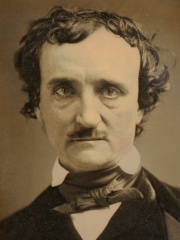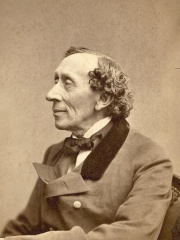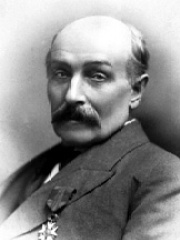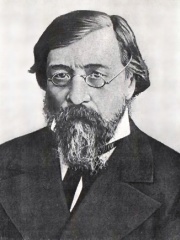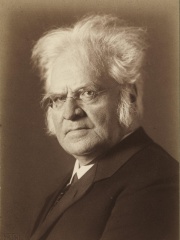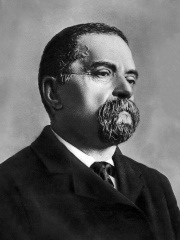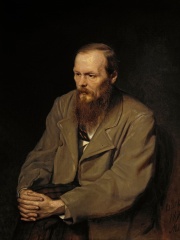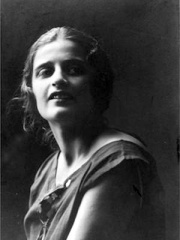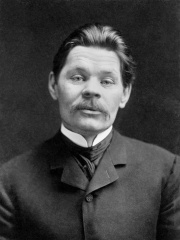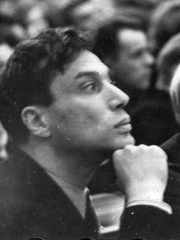WRITER
Leo Tolstoy
1828 - 1910

 Leo Tolstoy
Leo Tolstoy
Count Lev Nikolayevich Tolstoy (; Russian: Лев Николаевич Толстой, IPA: [ˈlʲef nʲɪkɐˈla(j)ɪvʲɪtɕ tɐlˈstoj] ; 9 September [O.S. 28 August] 1828 – 20 November [O.S. 7 November] 1910), usually referred to in English as Leo Tolstoy, was a Russian writer. He is regarded as one of the greatest and most influential authors of all time. Born to an aristocratic family, Tolstoy achieved acclaim in his twenties with his semi-autobiographical trilogy, Childhood, Boyhood and Youth (1852–1856), and with Sevastopol Sketches (1855), based on his experiences in the Crimean War. His War and Peace (1869), Anna Karenina (1878), and Resurrection (1899), which is based on his "youthful sins," are often cited as pinnacles of realist fiction and three of the greatest novels ever written. Read more on Wikipedia
His biography is available in 183 different languages on Wikipedia (up from 179 in 2024). Leo Tolstoy is the 9th most popular writer (up from 11th in 2024), the 5th most popular biography from Russia (down from 4th in 2019) and the 2nd most popular Russian Writer.
Leo Tolstoy is most famous for his epic novels War and Peace and Anna Karenina.
Memorability Metrics
Page views of Leo Tolstoy by language
Among WRITERS
Among writers, Leo Tolstoy ranks 9 out of 7,302. Before him are William Shakespeare, Dante Alighieri, Johann Wolfgang von Goethe, J. R. R. Tolkien, Edgar Allan Poe, and Hans Christian Andersen. After him are Franz Kafka, Victor Hugo, Voltaire, James Joyce, Sophocles, and Jules Verne.
Most Popular Writers in Wikipedia
Go to all RankingsWilliam Shakespeare
1564 - 1616
HPI: 92.59
Rank: 3
Dante Alighieri
1265 - 1321
HPI: 92.13
Rank: 4
Johann Wolfgang von Goethe
1749 - 1832
HPI: 90.96
Rank: 5
J. R. R. Tolkien
1892 - 1973
HPI: 90.69
Rank: 6
Edgar Allan Poe
1809 - 1849
HPI: 90.35
Rank: 7
Hans Christian Andersen
1805 - 1875
HPI: 90.14
Rank: 8
Leo Tolstoy
1828 - 1910
HPI: 89.82
Rank: 9
Franz Kafka
1883 - 1924
HPI: 89.62
Rank: 10
Victor Hugo
1802 - 1885
HPI: 89.52
Rank: 11
Voltaire
1694 - 1778
HPI: 89.44
Rank: 12
James Joyce
1882 - 1941
HPI: 89.38
Rank: 13
Sophocles
497 BC - 406 BC
HPI: 89.32
Rank: 14
Jules Verne
1828 - 1905
HPI: 88.32
Rank: 15
Contemporaries
Among people born in 1828, Leo Tolstoy ranks 1. After him are Jules Verne, Henrik Ibsen, Henry Dunant, Rani of Jhansi, Randal Cremer, Saigō Takamori, Charbel Makhlouf, Hippolyte Taine, Dante Gabriel Rossetti, Nikolay Chernyshevsky, and Albert Marth. Among people deceased in 1910, Leo Tolstoy ranks 1. After him are Edward VII, Mark Twain, Robert Koch, Henry Dunant, Florence Nightingale, Bjørnstjerne Bjørnson, William James, Henri Rousseau, Nadar, O. Henry, and Giovanni Schiaparelli.
Others Born in 1828
Go to all RankingsLeo Tolstoy
WRITER
1828 - 1910
HPI: 89.82
Rank: 1
Jules Verne
WRITER
1828 - 1905
HPI: 88.32
Rank: 2
Henrik Ibsen
WRITER
1828 - 1906
HPI: 83.92
Rank: 3
Henry Dunant
SOCIAL ACTIVIST
1828 - 1910
HPI: 83.32
Rank: 4
Rani of Jhansi
POLITICIAN
1828 - 1858
HPI: 78.29
Rank: 5
Randal Cremer
POLITICIAN
1828 - 1908
HPI: 76.27
Rank: 6
Saigō Takamori
MILITARY PERSONNEL
1828 - 1877
HPI: 74.71
Rank: 7
Charbel Makhlouf
RELIGIOUS FIGURE
1828 - 1898
HPI: 73.82
Rank: 8
Hippolyte Taine
HISTORIAN
1828 - 1893
HPI: 73.03
Rank: 9
Dante Gabriel Rossetti
WRITER
1828 - 1882
HPI: 72.74
Rank: 10
Nikolay Chernyshevsky
WRITER
1828 - 1889
HPI: 70.40
Rank: 11
Albert Marth
ASTRONOMER
1828 - 1897
HPI: 70.37
Rank: 12
Others Deceased in 1910
Go to all RankingsLeo Tolstoy
WRITER
1828 - 1910
HPI: 89.82
Rank: 1
Edward VII
NOBLEMAN
1841 - 1910
HPI: 89.68
Rank: 2
Mark Twain
WRITER
1835 - 1910
HPI: 83.94
Rank: 3
Robert Koch
PHYSICIAN
1843 - 1910
HPI: 83.47
Rank: 4
Henry Dunant
SOCIAL ACTIVIST
1828 - 1910
HPI: 83.32
Rank: 5
Florence Nightingale
PHYSICIAN
1820 - 1910
HPI: 83.23
Rank: 6
Bjørnstjerne Bjørnson
WRITER
1832 - 1910
HPI: 81.19
Rank: 7
William James
PSYCHOLOGIST
1842 - 1910
HPI: 78.62
Rank: 8
Henri Rousseau
PAINTER
1844 - 1910
HPI: 78.41
Rank: 9
Nadar
PHOTOGRAPHER
1820 - 1910
HPI: 77.63
Rank: 10
O. Henry
WRITER
1862 - 1910
HPI: 74.72
Rank: 11
Giovanni Schiaparelli
ASTRONOMER
1835 - 1910
HPI: 74.56
Rank: 12
In Russia
Among people born in Russia, Leo Tolstoy ranks 5 out of 3,761. Before him are Fyodor Dostoevsky (1821), Immanuel Kant (1724), Vladimir Lenin (1870), and Vladimir Putin (1952). After him are Pyotr Ilyich Tchaikovsky (1840), Nicholas II of Russia (1868), Mikhail Gorbachev (1931), Kim Jong-il (1941), Igor Stravinsky (1882), Yuri Gagarin (1934), and Dmitri Mendeleev (1834).
Others born in Russia
Go to all RankingsFyodor Dostoevsky
WRITER
1821 - 1881
HPI: 93.20
Rank: 1
Immanuel Kant
PHILOSOPHER
1724 - 1804
HPI: 92.35
Rank: 2
Vladimir Lenin
POLITICIAN
1870 - 1924
HPI: 91.51
Rank: 3
Vladimir Putin
POLITICIAN
1952 - Present
HPI: 90.03
Rank: 4
Leo Tolstoy
WRITER
1828 - 1910
HPI: 89.82
Rank: 5
Pyotr Ilyich Tchaikovsky
COMPOSER
1840 - 1893
HPI: 89.39
Rank: 6
Nicholas II of Russia
POLITICIAN
1868 - 1918
HPI: 87.96
Rank: 7
Mikhail Gorbachev
POLITICIAN
1931 - 2022
HPI: 87.63
Rank: 8
Kim Jong-il
POLITICIAN
1941 - 2011
HPI: 87.59
Rank: 9
Igor Stravinsky
COMPOSER
1882 - 1971
HPI: 87.34
Rank: 10
Yuri Gagarin
ASTRONAUT
1934 - 1968
HPI: 87.19
Rank: 11
Dmitri Mendeleev
CHEMIST
1834 - 1907
HPI: 86.92
Rank: 12
Among WRITERS In Russia
Among writers born in Russia, Leo Tolstoy ranks 2. Before him are Fyodor Dostoevsky (1821). After him are Anton Chekhov (1860), Alexander Pushkin (1799), Ayn Rand (1905), Maxim Gorky (1868), Isaac Asimov (1920), Aleksandr Solzhenitsyn (1918), Boris Pasternak (1890), E. T. A. Hoffmann (1776), Vladimir Nabokov (1899), and Ivan Turgenev (1818).
Fyodor Dostoevsky
1821 - 1881
HPI: 93.20
Rank: 1
Leo Tolstoy
1828 - 1910
HPI: 89.82
Rank: 2
Anton Chekhov
1860 - 1904
HPI: 86.67
Rank: 3
Alexander Pushkin
1799 - 1837
HPI: 84.64
Rank: 4
Ayn Rand
1905 - 1982
HPI: 83.74
Rank: 5
Maxim Gorky
1868 - 1936
HPI: 82.46
Rank: 6
Isaac Asimov
1920 - 1992
HPI: 81.85
Rank: 7
Aleksandr Solzhenitsyn
1918 - 2008
HPI: 81.48
Rank: 8
Boris Pasternak
1890 - 1960
HPI: 80.01
Rank: 9
E. T. A. Hoffmann
1776 - 1822
HPI: 79.88
Rank: 10
Vladimir Nabokov
1899 - 1977
HPI: 79.76
Rank: 11
Ivan Turgenev
1818 - 1883
HPI: 79.43
Rank: 12




